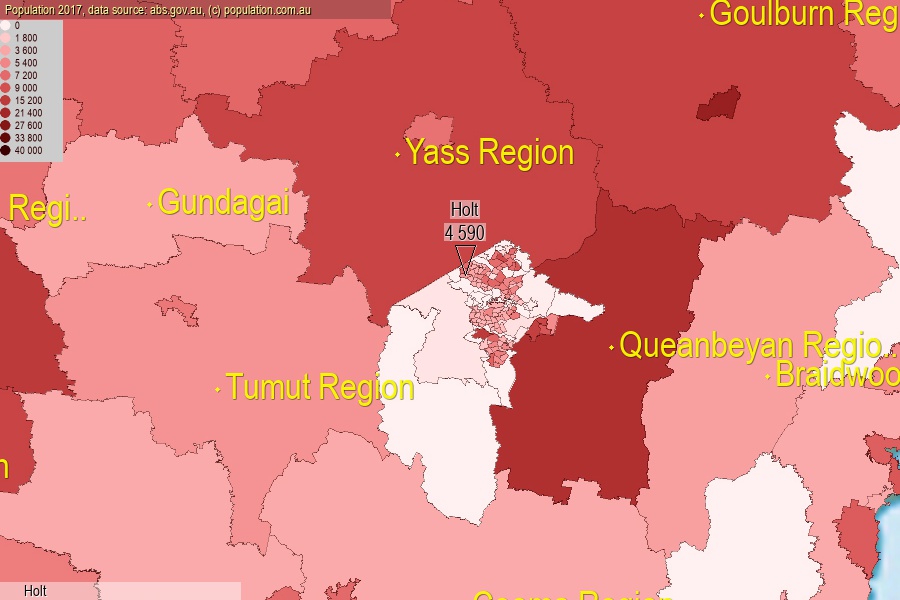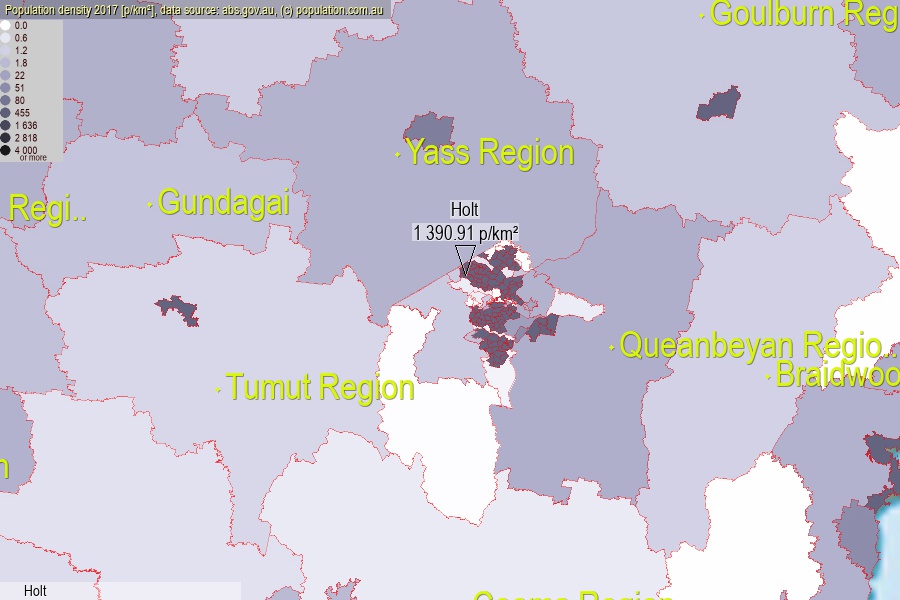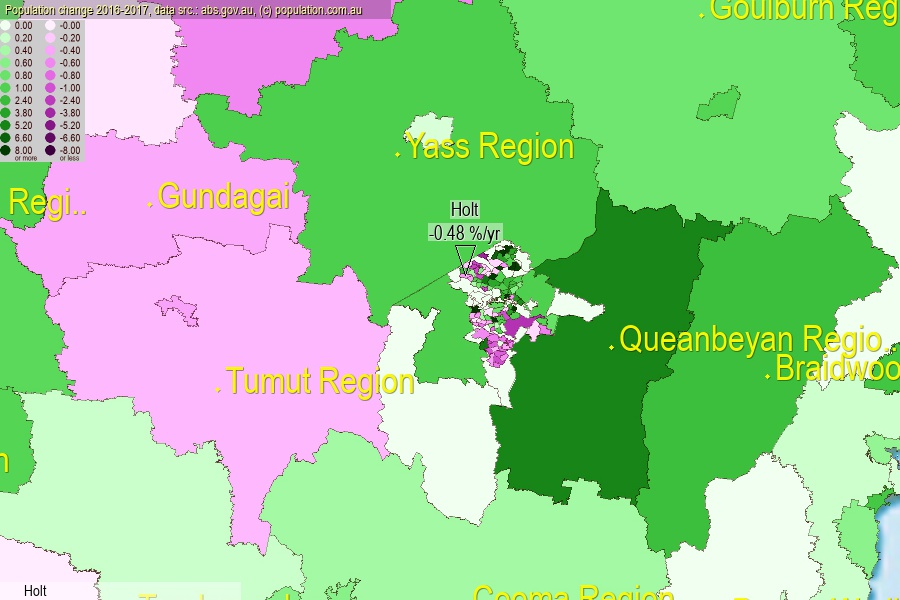 population.com.au
population.com.auLast official estimated population of Holt (as Statistical Area Level 2) was 4 590 people (on 2017-06-30)[2]. This was 0.02% of total Australian population and 1.095% of ACT population. Area of Holt is 3.30 km², in this year population density was 1 390.91 p/km² . If population growth rate would be same as in period 2016-2017 (-0.48%/yr), Holt population in 2025 would be 4 418. [0]



Click to enlarge. Holt is located in the center of the images.
Population [people], population density [p./km²] and population change [%/year] [2]
View borders » (new window) [4]
[1991-1992] -0.61 %/Yr.
[1992-1993] -0.28 %/Yr.
[1993-1994] +0.07 %/Yr.
[1994-1995] +0.20 %/Yr.
[1995-1996] +0.55 %/Yr.
[1996-1997] +0.85 %/Yr.
[1997-1998] +1.96 %/Yr.
[1998-1999] +1.54 %/Yr.
[1999-2000] +2.04 %/Yr.
[2000-2001] +1.10 %/Yr.
[2001-2002] -0.61 %/Yr.
[2002-2003] -0.57 %/Yr.
[2003-2004] -0.78 %/Yr.
[2004-2005] -0.47 %/Yr.
[2005-2006] -0.02 %/Yr.
[2006-2007] +0.91 %/Yr.
[2007-2008] +0.04 %/Yr.
[2008-2009] +0.41 %/Yr.
[2009-2010] +0.96 %/Yr.
[2010-2011] +0.06 %/Yr.
[2011-2012] -0.97 %/Yr.
[2012-2013] -1.71 %/Yr.
[2013-2014] -1.76 %/Yr.
[2014-2015] -1.88 %/Yr.
[2015-2016] -0.71 %/Yr.
[2016-2017] -0.48 %/Yr.
[0] Calculated with linear interpolation from officially estimated population
[1] Read more about SA2 and Australian Statistical Geography Standard (ASGS) on abs.gov.au
[2] Population data from Australian Bureau of Statistics (Population and density: 2017; change: 2016-2017)
[3] Digital Boundaries: Australian Statistical Geography Standard (ASGS) 2016.
[4] Border coordinates are simplifyed using Ramer-Douglas-Peucker algorithm.